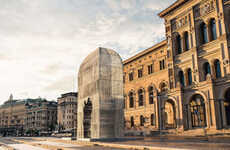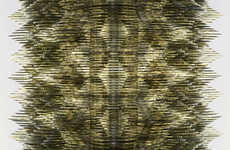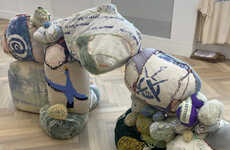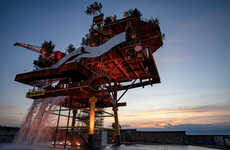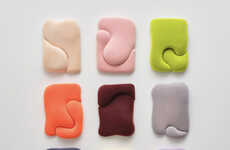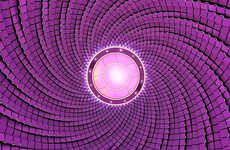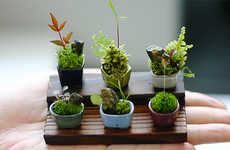
The Celeste Roberge Rising Cairns is Made with Wire and Rock
Jordy E — February 8, 2013 — Art & Design
References: celesteroberge & mymodernmet
The Celeste Roberge Rising Cairns structure has been made in the image of the artist. Roberge worked with steel wire and rock here, forming them into the shape of a crouched human being.
Roberge is primarily concern with the intersection between history and geology in her work. Rising Cairns is reflective of these concerns given its form and the presence of the rocks. She is moreover intent on working in the themes of memory, furniture and nature, motifs that are again present in this piece.
While this installation is meant to be modeled in her shape, it is an exaggeration of her physical features as it stands at 58" x 54" x 43." Its ginormous qualities question the bodily form.
Roberge is primarily concern with the intersection between history and geology in her work. Rising Cairns is reflective of these concerns given its form and the presence of the rocks. She is moreover intent on working in the themes of memory, furniture and nature, motifs that are again present in this piece.
While this installation is meant to be modeled in her shape, it is an exaggeration of her physical features as it stands at 58" x 54" x 43." Its ginormous qualities question the bodily form.
Trend Themes
1. Intersecting History and Geology - There is an opportunity for disruptive innovation at the intersection of history and geology, creating new artistic expressions and installations.
2. Memory-themed Art - There is potential for disruptive innovation in creating art that explores memory and its connection to personal identity and emotions.
3. Ginormous Installations - There is room for disruptive innovation in creating oversized installations that challenge traditional perceptions of scale and physical form.
Industry Implications
1. Art - There is an opportunity for disruptive innovation in the art industry to explore new materials and techniques for creating sculptures and installations.
2. History - There is potential for disruptive innovation within the field of history to incorporate artistic expressions and installations that provide unique perspectives on historical events.
3. Furniture Design - There is room for disruptive innovation in the furniture design industry to incorporate elements of art and nature into functional furniture pieces that evoke emotions and memories.
3.1
Score
Popularity
Activity
Freshness

